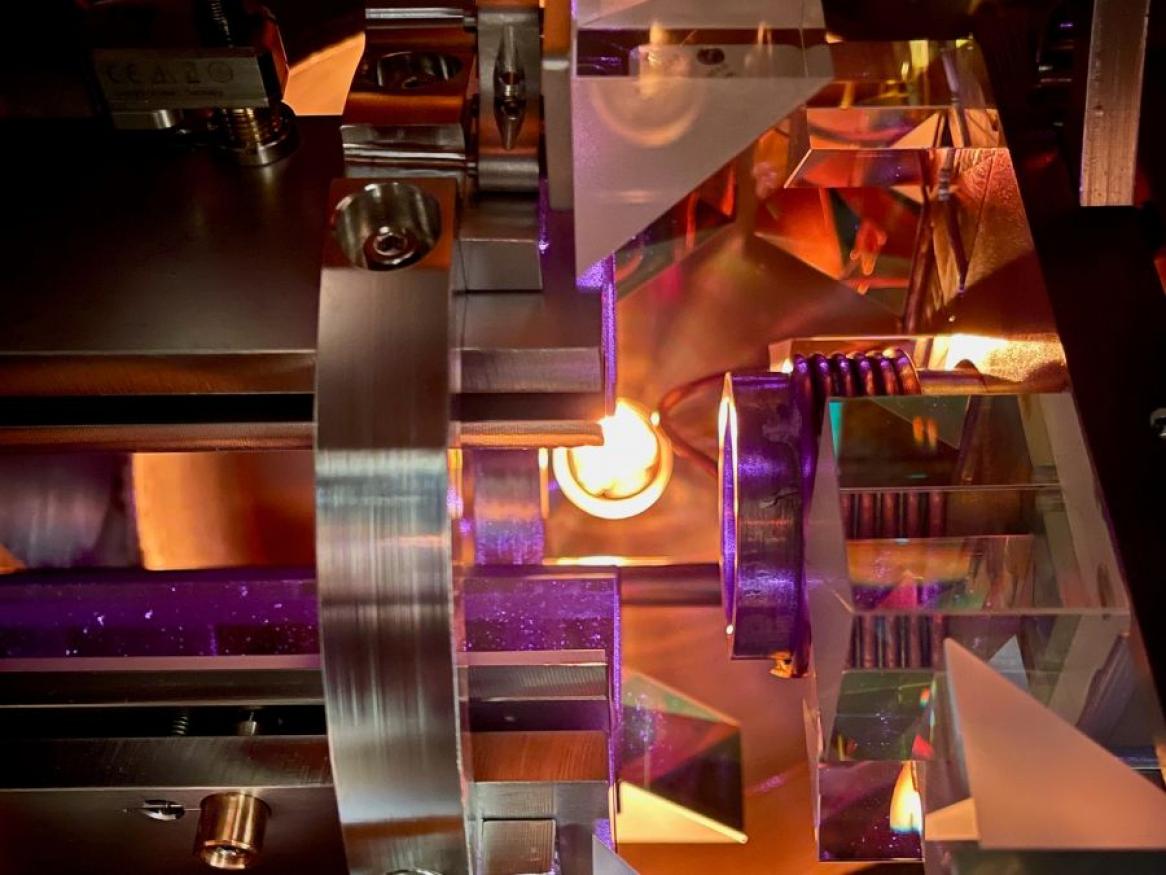Atom Trap Trace Analysis (ATTA)
Australia relies on its groundwater for 30% of its water supply for human consumption, stock watering, irrigation and mining. With climate change and periods of prolonged drought, surface water is becoming increasingly more unreliable and the use of groundwater is rising. We need to make sure it’s sustainable.
Measuring the ultra-low concentrations of radioactive noble gases allows researchers to understand the age, origin and interconnectivity of the groundwater and how it has moved underground through space and time.

Atom Trap Trace Analysis Facility
"This is the first Atom Trap Trace Analysis facility in the Southern Hemisphere and, combined with our partner CSIRO’s complementary Noble Gas Facility at the Waite campus in Adelaide, gives Australia one of the most comprehensive noble gas analysis capabilities in the world."
Dr Rohan Glover
Atom Trap Trace Analysis (ATTA) is an exceptional example of how quantum technology can be utilised to help overcome challenges facing our modern society. The lab measures the radioactive noble gases using laser cooling and trapping techniques. These isotopes have extremely low natural concentrations, less than one part per trillion in the environment, making measurement an incredible challenge.
However, because noble gases don’t easily react chemically, they are the gold standard for environmental tracers to track groundwater movements. Measurements of their concentration provide dating information to address the greatest environmental challenges facing Australia and the globe, such as adaption to climate change and sustainable management of our finite water resources. This analytic capability will also allow researchers to look further into the past of Antarctica’s climate, building an understanding of global environmental change.

Sunset during a field trip to take groundwater samples in Queensland. Left to right: Dr Rohan Glover, Dr Axel Suckow, Florian Meienburg, Dr Thomas Chambers.
Measurement using the ATTA technique is state-of-the-art and only in recent years becoming available for routine analysis. Before this new facility, researchers wanting to measure these ultra-low concentrations of noble gases had to rely on a very small number of overseas laboratories that don’t meet demands for their services.
Energy, mining and resources are key industry engagement priorities for IPAS, the University of Adelaide and environmental sustainability is a research focus.
The new ATTA facility, developed in partnership with CSIRO, allows us to understand the sources of water, where it comes from and what the recharge rates are, which then allows us to make decisions about sustainable extraction. This is critical where development of any kind might use or impact groundwater systems – from urban development where groundwater systems are used to supply communities, to agricultural and mining development.
-
Resources
Download the below PDF to learn more about ATTA applications:
Look at the below video to learn about the new facility:
Partners websites:
-
Team members
University of Adelaide
- Prof Andre Luiten - Chief Investigator
- Dr Rohan Glover - Project Lead
- Dr Ivan Herrera
- Dr Thomas Chambers
- Helena Wescombe-Down
University of Heidelberg
CSIRO
- Dr Dirk Mallants
- Dr Axel Suckow
- Dr Punjehl Crane
- Dr Christoph Gerber
- Dr Alec Deslandes
For Postdoctoral, Honours, Masters and PhD opportunities, please contact Dr Rohan Glover for more information.
